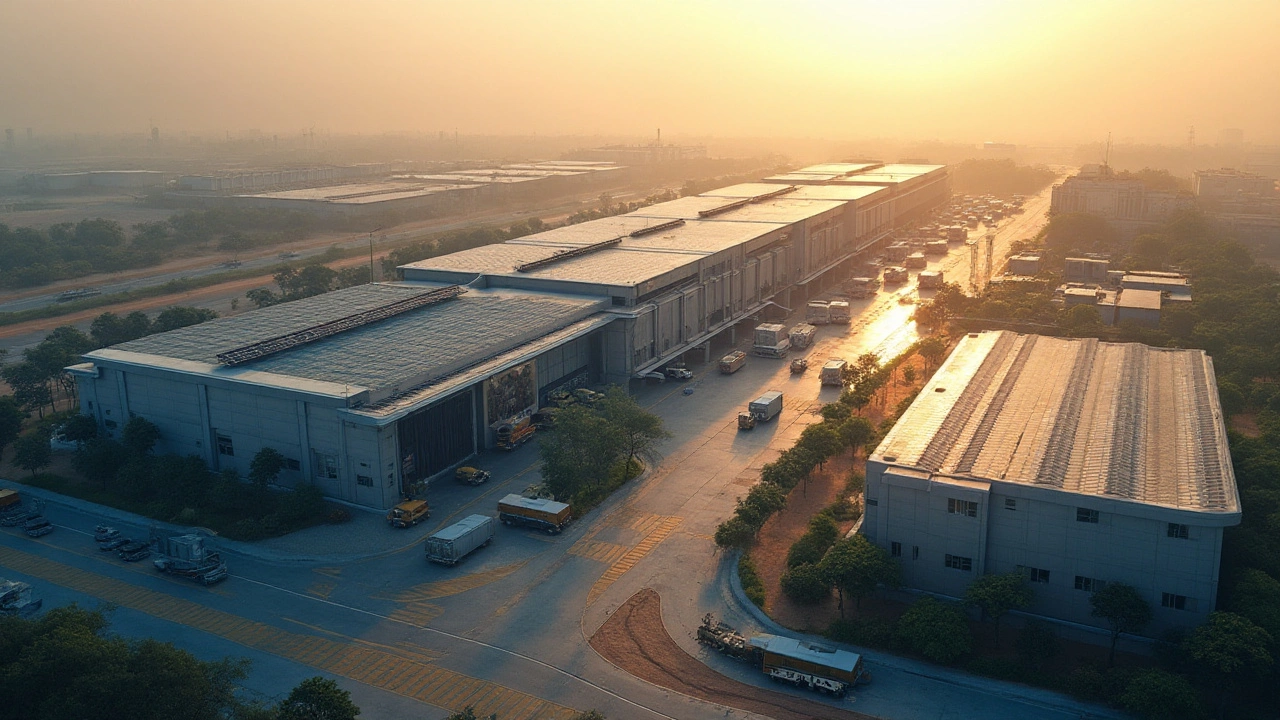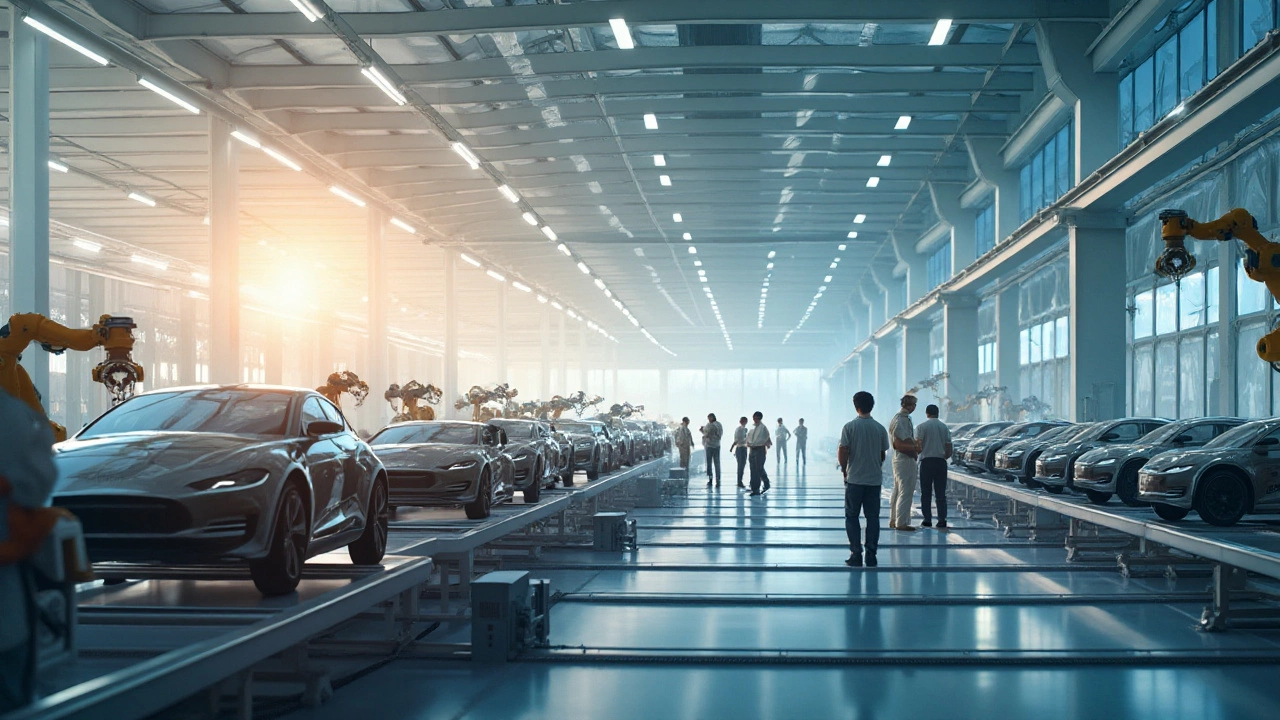The world of manufacturing is on the verge of a significant evolution, driven by societal changes and technological advances. As we dive into 2025, innovative sectors are expected to lead the charge in transforming how we manufacture goods and what opportunities unfold for businesses aspiring to thrive.
From the pursuit of sustainable practices to the integration of cutting-edge technologies, the landscape is set to be reshaped by leaders who dare to innovate. Whether you're an investor, an entrepreneur, or simply fascinated by the future of manufacturing, understanding these trends can offer you a path to success amidst the rapid changes.
- Emerging Trends in Manufacturing
- Sustainable Manufacturing Practices
- Technological Advancements
- Opportunities for Entrepreneurs
Emerging Trends in Manufacturing
The landscape of manufacturing trends is changing rapidly due to a blend of technological breakthroughs and evolving consumer demands. In 2025, one of the foremost trends to watch is the rise of renewable energy sources being integrated into manufacturing processes. Factories are transitioning to solar and wind energy, not only to reduce carbon footprints but also to cut energy costs in the long run. This aligns with the growing emphasis on environmental responsibility and is driven by both regulation and public sentiment towards sustainability.
In parallel, the industry is seeing significant advancements in automated vehicles. The shift isn't just limited to transportation but extends to manufacturing logistics and operations. Automation within the production line is becoming more sophisticated, employing AI to predict maintenance needs and optimize production schedules. A recent report from the World Manufacturing Forum noted that AI-driven automation could boost global productivity by as much as 30% over the next decade. Such innovations ensure higher efficiency while reducing error rates, a key factor for companies aiming to stay competitive in a complex market.
"The future of manufacturing is bright and tech-driven, focusing on efficiency and sustainability," notes the CEO of a leading manufacturing tech company. "Businesses that adapt rapidly will likely see exponential growth."
Another fascinating trend is the adoption of advanced materials, such as graphene and biodegradable plastics. These materials promise stronger, lighter, and more sustainable products, opening up new possibilities across industries from electronics to packaging. Companies investing in research and integration of these materials are expected to gain a competitive edge. Advances in research are enabling cost-effective production methods, and with the demand for eco-friendly products soaring, the adoption rate of these advanced materials is set to increase rapidly.
The convergence of these trends points to a future where smart factories will rely heavily on data analytics and Internet of Things (IoT) systems. These technologies provide real-time insights into production processes and supply chains, enhancing agility and responsiveness. By embracing these trends, manufacturers not only keep pace with change but also set the stage for sustainable growth. As the industry continues to evolve, those who capitalize on these opportunities will likely lead the charge into a new era of manufacturing excellence.

Sustainable Manufacturing Practices
As we traverse into 2025, there’s an undeniable shift in the manufacturing world towards sustainability—a transformation that’s as much about strategic business logic as it is about environmental necessity. Many leaders in the manufacturing trends sphere have begun to recognize that sustainable production practices don't just preserve the planet but also unlock new market opportunities and mitigate risks amid growing regulatory scrutiny. The transition to sustainable methods enhances a company's brand image and appeals to a burgeoning group of eco-conscious consumers who demand greener products.
The renewable energy sector is at the forefront of this revolution. Manufacturers are increasingly investing in solar, wind, and hydropower to fuel their production processes. In some instances, entire facilities are being powered by these renewable resources. Notably, Tesla's gigafactories, for instance, are setting a precedent for how massive manufacturing operations can significantly reduce carbon footprints and contribute positively to future of manufacturing. Adopting renewable energy leads to long-term cost efficiencies as companies move away from volatile fossil fuel markets.
Another facet of sustainable manufacturing is the use of advanced, biodegradable, and recycled materials. Companies are developing innovative ways to minimize waste and transform it into valuable resources. For instance, Adidas has been pioneering in the use of recycled plastics from the ocean to create their footwear, an initiative that addresses both environmental challenges and market demand for sustainable products. According to a report by McKinsey, industries implementing circular economy models can unlock $1 trillion in revenue by 2030. This substantial return illustrates the tangible benefits for businesses daring to shift towards more eco-friendly practices.
"Sustainable manufacturing is not just about being green, it's about being smart," said Andrew Winston, author of The Big Pivot. His words resonate ever louder as companies like Unilever and Patagonia demonstrate successful business models built on sustainability principles.
To facilitate this transitional phase, technological advancements are pivotal. The development of cleaner, more efficient processes plays a crucial role in achieving sustainability. This includes the adoption of energy-efficient machinery equipped with IoT technology, enabling real-time monitoring of energy consumption and waste. By leveraging machine learning algorithms, companies can optimize their operations to ensure minimal resource use and maximize efficiency. Such sophisticated systems not only assist in maintaining sustainability commitments but also provide a competitive edge in rapidly evolving markets.
For those seeking to invest or innovate within this domain, it's essential to understand that sustainability in manufacturing is not a temporary trend. It's a critical evolution that offers substantial rewards both financially and ethically. As we steer towards this promising future, the industries that will boom are those that can successfully merge sustainability with profitability, proving that responsible manufacturing is indeed viable and lucrative. Those who act now are likely to be the vanguards of 2025 industry growth.

Technological Advancements
In 2025, the realm of manufacturing is not just flirting with technology but fully embracing it. The integration of artificial intelligence (AI) into manufacturing processes offers a revolutionary approach to production efficiency. AI-driven systems are being used to optimize supply chains, predict equipment failures before they occur, and improve the quality control process. It's fascinating how algorithms can process data at speeds incomparable to human capabilities, providing actionable insights in real-time that radically enhance productivity and reduce downtime.
3D printing, or additive manufacturing, has matured and is now a staple in many industries. The ability to produce complex components on-demand allows for unprecedented customization while cutting down on waste. This technology innovation is particularly influential in industries like aerospace and healthcare, where bespoke solutions are often required. By 2025, we've seen a surge in the demand for 3D printed parts that range from intricate engine components to custom prosthetic limbs.
The era of the Internet of Things (IoT) has arrived, and it’s playing a pivotal role in ensuring that factories operate with greater intelligence and connectivity. Smart sensors on manufacturing floors relay data to central systems that monitor environmental conditions, machine health, and numerous other variables crucial to efficient manufacturing trends. These sensors act as digital eyes and ears, providing the information needed to make informed decisions that improve operational efficiency and safety.
Robotics also continues to redefine what's possible in future of manufacturing. Advanced robotics systems are now capable of performing delicate tasks with exceptional precision. Unlike the robots of previous decades, these autonomous machines are adaptable, learning from their environment and experiences. From automotive assembly to electronics production, the flexibility and reliability of modern robots are transforming how entire industries operate. A recent study suggested robotics could boost global manufacturing GDP by as much as 5% over a decade.
A report from McKinsey highlights, “By 2025, automation technologies such as robotics and AI will not only enhance productivity but also redefine the workforce itself.”This brings us to an important point: the symbiotic relationship between these technological advancements and the workforce. Human oversight in robotic operations ensures that machines are utilized in the most effective ways while creating new jobs centered around maintaining and improving these systems.
These technological advancements are accompanied by augmented reality (AR) tools that aid in training and maintenance routines. Workers wearing AR headsets can visualize complex data overlaid in their current environment, offering instructions as if an expert was right beside them. In maintenance, AR enables technicians to foresee potential failures and perform preventive measures before minor issues escalate, significantly extending equipment lifespan.
The convergence of these technological innovations forms a tapestry that is vibrant and full of potential. As these booming industries evolve, they will not only stimulate economic growth but also lead to more sustainable and efficient production methods, aligning perfectly with the planet’s ever-pressing environmental needs. Engaging with and investing in these technologies today plants the seeds for a more prosperous tomorrow.

Opportunities for Entrepreneurs
In 2025, the manufacturing trends present a fertile ground for entrepreneurs who are willing to step into the future of industry. We've reached a point where innovation isn't just an advantage; it's a necessity. Whether one dreams of launching a startup or expanding an existing business, understanding these opportunities could be the key to success. With the advancements in technology and a significant push towards sustainable practices, there is an enhanced focus on future of manufacturing that leverages eco-friendly processes as well as automation. Many firms and new ventures are witnessing the multiplying potential in sectors like renewable energy and advanced materials.
One prime area ripe for investment is renewable energy manufacturing. As the globe shifts towards sustainable sources, the production of solar panels and wind turbines is set to increase dramatically. According to a recent International Energy Agency report, the renewable energy sector is on track to account for almost 95% of the net increase in global power capacity through 2026. This opens up vast avenues for entrepreneurs to explore parts manufacturing, assembly, and even transport and logistics solutions linked to renewable energy devices.
"We are witnessing a massive shift in global energy dynamics where entrepreneurs have an unprecedented chance to redefine the market," stated Fatih Birol, Executive Director of the International Energy Agency.
Leveraging Technology
Another burgeoning field is the realm of advanced materials. The creation and deployment of smart materials, which can react to environmental changes or have self-healing properties, is slated to revolutionize countless industries, including aerospace, automotive, and even construction. As more industries adopt these materials, entrepreneurs who capitalize on these technologies can carve out a niche with endless applications. Delving into research collaborations with universities or starting labs that focus on the development of such innovative materials could lead to groundbreaking products with massive demand.
Additionally, the implementation of technologies like 3D printing and AI in traditional manufacturing processes can immensely boost efficiency and customize mass production, allowing small and medium enterprises to compete on a level usually reserved for industry giants. The manufacturing landscape in 2025 will likely become a melting pot of emerging technologies and resourceful minds. Consider using AI to predict manufacturing trends or improving quality control as steps that would provide an edge in service delivery. Establishing facilities that incorporate these technologies could transform how production is perceived and executed.
Steps to Success
Entrepreneurs seeking to thrive in the booming industries of 2025 should bear in mind certain foundational steps:
- Identify niche markets where demand is high but competition remains low, and tailor your offerings to address unmet needs.
- Invest in skills and technologies necessary for adapting to changing market demands. Engage with learning platforms and industry events to stay informed.
- Consider partnerships with industry veterans or cross-sector collaborations that can diversify experiences and expertise.
- Ensure a commitment to sustainability as a principle, integrating green initiatives in both production and supply-chain logistics.
Amidst these changes, one truth remains constant: the audacious and adaptable stand to gain the most. As an entrepreneur, embracing these opportunities with a keen sense of market trends and a pursuit of innovative practices will undoubtedly position your business for substantial growth in the vibrant field of manufacturing by 2025.
